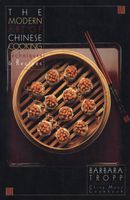Advertisement
Preparation info
- Serves
4
as a substantial vegetable course . - Difficulty
Medium
Appears in
Published 1982
This is a stir-fry of deep-fried string beans, tossed with zesty condiments and bits of pork, then glazed with a sauce that one lets nearly evaporate in order to concentrate its flavor (this being what is known as dry-frying). It is one of the dishes for which Szechwan is famed—yet it hasn’t a speck of chili in it. What makes it typically Szechwanese is the liberal use of dried and pickled condiments to create a pungency that moves one to eat more.
- Tende


